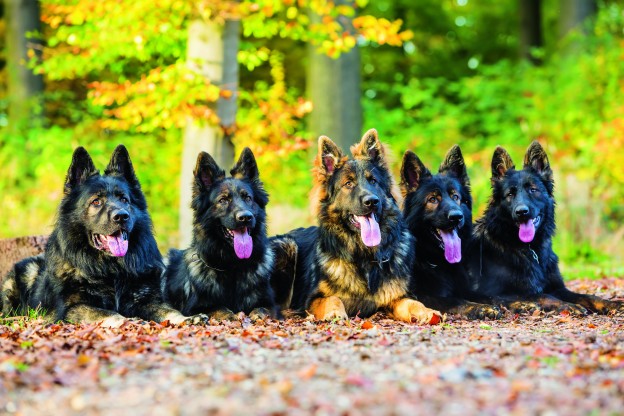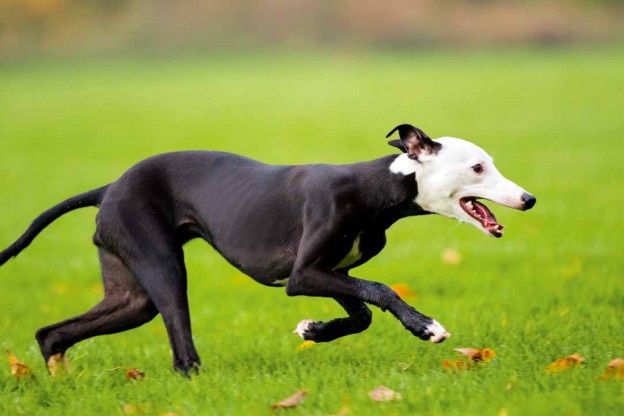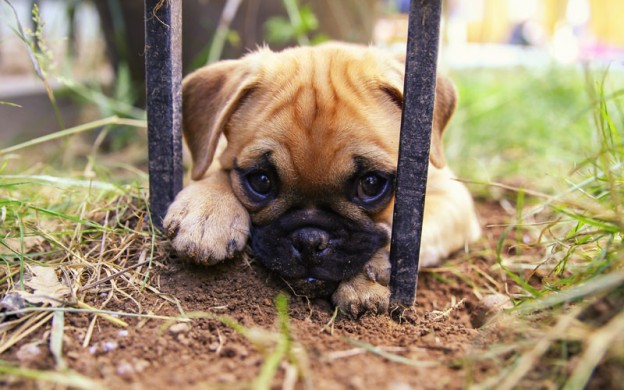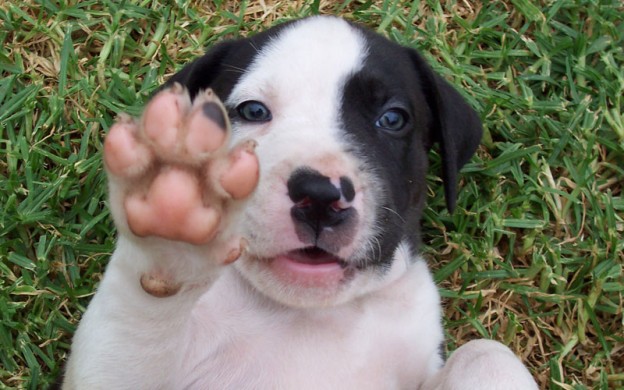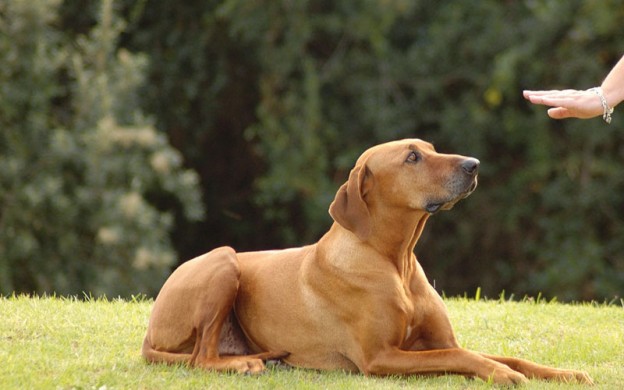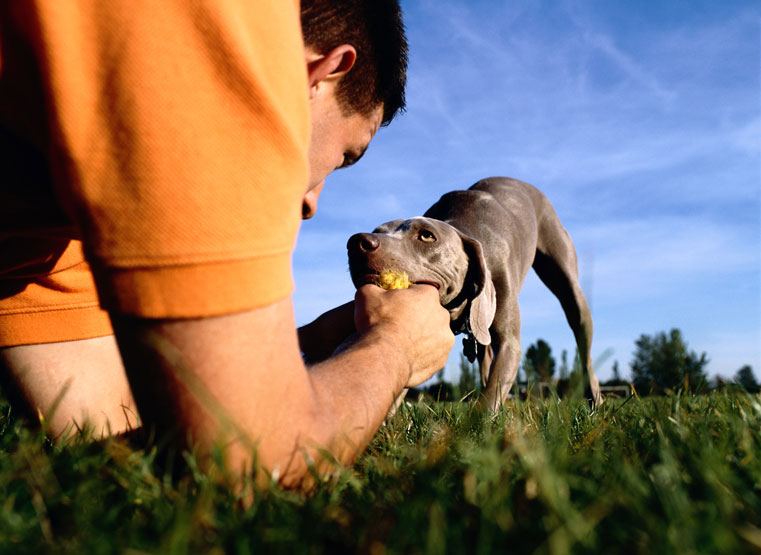
Dog trainer Karin Larsen Bridge explains the controversy over why using treats as a training reward works and why it doesn’t.
The use of food rewards to train animals – from killer whales and elephants, to parrots and puppies – has become increasingly accepted and popular. Traditional methods have been replaced by laws of Learning Theory.
The most important rule is behaviour that is rewarded is repeated- or put simply, if you reward your dog for doing something right, he will do it more and more.
Treat training normally refers to what is more correctly termed positive motivational training. Although food is not the only reward used in positive training, some people are still uncomfortable with the heavy reliance on food either because they feel their dog will not work reliably in the absence of food and/or because they consider using food to be an unnecessary bribe.
Why treat training works
Food is a wonderful training reward because:
It is desired by all dogs (though some more than others).
It is easily carried and produced.
It can be delivered quickly.
It disappears quickly.
It can be used in quick succession to practise a behaviour repeatedly (as opposed, for example, to throwing a ball as a reward for heeling).
It builds positive associations by pairing a desired treat with another event or object known as classical conditioning. This effect is the foundation of many puppy-class exercises, such as associating treats with being brushed or being handled by children to form a positive association, and also with behaviour modification programmes designed to change previously held negative associations.
It produces positive associations towards training and the training environment.
It can reduce levels of stress.
It increases motivation.
It enhances dog/owner relationships.
Why treat training doesn’t work
Food does not automatically train your dog for you it is merely a useful tool you may manipulate to your advantage. Poor or incomplete training practices are the main reasons people become disillusioned with treat training.
One of the fundamental principles owners fail to grasp is the difference between using food as a lure and using it as a reward (more correctly termed a reinforcement).
A lure is a treat presented before a behaviour to try to make it happen. By taking a piece of food and putting it in front of your puppys nose, you can lure the puppy to walk beside you, sit or down. Even though your puppy may be sitting and lying down with this method, he does not yet have a real understanding of the exercise. Luring is indeed a bribe and should only be used briefly as the first step in a multi-step process. Unfortunately, too many people think that when puppy follows a lure and sits, the job is done.
A reward, on the other hand, is presented after a behaviour. You are not so much rewarding your dog for being good, but reinforcing a correct response, making it more likely to happen again. Rewards not only provide information to your dog about how he should behave, but when presented intermittently, they maintain correct behaviour throughout the dogs life.
Common mistakes when using food in training:
* Food is never out of sight
When luring, food is always in sight. It is essential to quickly move to the next level, where food is out of sight. The dog then has to work out what he needs to do to get you to pull that treat out of your pocket. At this level, instead of simply following a lure, he has begun to use his brain: Oh, if I sit, you treat now I get it! This is the step many people fail to achieve. Sometime it is because:
* The treat has become the signal
Many owners find lure training so fun and easy, they become dependent on having a treat in their hand. From the dogs point of view, the treat actually becomes part of the signal to sit: When mum has a treat in her hand and moves it up, it means sit. When she doesn’t have a treat in her hand and waves it around, I don’t know what it means. You must be certain to establish clear signals or cues for all behaviours you want to train that do not include food in sight.
* The treat has become release
Just as you need to teach a clear signal to commence a behaviour, such as sit, you also need to teach a clear signal to indicate release from a behaviour (usually a word). This is particularly important with long-duration behaviours, such as sit, down and stay.
Many dogs unintentionally learn that the treat ends the behaviour: I lie down, I get a treat, I get up. This is made worse when owners then grab out another treat to lure the dog down again. What has the dog just learned? Every time I get up, Mum gets out another treat. And so the pop-up dog syndrome starts.
The answer is to withhold the treat briefly after the dog lies down, then start to put several treats down in quick succession on the ground, so he is rewarded now not for going down but for staying down followed by a release word, such as free. If the dog pops up all the time, not only is he unstable, but he never learns there is a release word that he needs to wait for.
* Dropping out the lure and the reward at the same time
When first attempting to drop food out of the hand (lure), many owners fail to reward a correct response. This teaches the dog that food in the hand predicts a reward and no food in hand predicts no reward exactly what we don’t want. Owners then complain, Hes so smart, he only does it when he sees the food. This needs to be turned around.
If you need to lure your dog into a sit, withhold the treat and just praise him. Try signalling your dog to sit without a treat visible and if he does so, reward him immediately with a treat hidden in a pocket or nearby bowl.
* Rewards insufficient or reduced too quickly
Professional and competitive positive trainers are generally far more generous with their rewards then most pet owners, who seem only too keen to stop using food. Insufficient rewards are like providing too few pieces of the behaviour puzzle.
Remember, food is information. When first training a behaviour, one should reward every correct response until one is reliably achieving nine out of 10 correct responses. After this, it is appropriate to reduce treats and alternate with a lesser reward, such as praise alone. Provided you have avoided the first mistake (food never out of sight), this should be an easy process. The dog will be used to performing the behaviour first, then waiting to see what your choice of reward will be – a treat, praise or a game.
* Ineffective treats
A reward will only increase behaviour if your dog desires it. Though the ideal is to use your dogs daily food allowance in training, there may be times when you need to supplement your training rewards with something a little more exciting, such as fresh chicken, cheese or sausages, particularly when you are in a highly distracting area, such as a training class full of playful young dogs.
It is a great idea to have a variety of treats some favourites, some less so so your dog can never predict what treat he may get next. Variety will keep your dog hoping his favourite treat may be the next one and avoids him being in the drivers seat and deciding, Im getting a bit sick of liver, I think Ill just skip it this time.
* A variety of rewards not established
If you don’t want to be overly reliant on training treats, you need to install other effective rewards for your dog. The most important of these is praise. Every time you treat your dog, you should also praise him with a specific and genuine praise voice that tells him hes done the right thing.
Treating as you praise will classically condition a higher value to your praise, so that even if you don’t treat some of the time, your praise will have a positive reinforcing effect.
Some dogs naturally love chasing ball or playing games of tug, but for those who don’t, it is worth investing the time to train them as alternative rewards. Food again can be an important tool in training these activities in a fun way. Ultimately, the greater the variety of rewards you can offer your dog, the better.
Treat training a legitimate way to train?
Learning theorists tell us that behaviour that is not rewarded will extinguish. This makes evolutionary sense why would an animal waste hard-earned calories on an activity that led to nothing? Therefore, if there are no rewards, there is no behaviour. The question is not whether to use rewards, but rather which type of reward you would prefer to use?
There are two classifications of rewards – positive and negative. Traditional trainers prefer to use the negative reward, which involves releasing the pressure of a choke chain in response to correct behaviour, and they need to do so throughout the dog’s life.
Positive trainers apply positive rewards, such as treats or games for correct behaviour, and they need to do so throughout the dog’s life. In both cases, the rewards (positive or negative) are essential to prevent trained behaviours from extinguishing. The suggestion made by some that one method is spoiling and the other is real training, or that one is all right for pet dogs, but not good enough for serious working dogs is totally unjustified and moralistic.
Dogs trained using treat training save lives every day as assistance dogs, rescue dogs or police dogs. Behaviour must be rewarded to be maintained; it is simply a matter of personal choice whether you prefer to give a treat or jerk a chain.
Treat training – without the treats
Since a balanced diet and ideal weight are vital to maintaining a healthy dog, no one actually recommends using a lot of food treats to train your dog.
The majority of food used in a training programme should be coming out of your dogs regular food bowl, which contains his daily nutritional needs. The difference is that it is dished out tit for tat for desired behaviour throughout the course of the day, rather than given as a huge freebie at the end of the day.
In tit for tat, 100 pieces of food reinforces 100 sits, whereas a food bowl, at best, reinforces one pre-dinner sit-stay. Making your dog work for his food as well as all other rewards is essential if it is to be used to best advantage. There is no point using food in training if your dog is already satiated or knows therell be chicken for dinner anyway why work for it now, hell be thinking.



